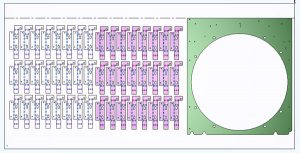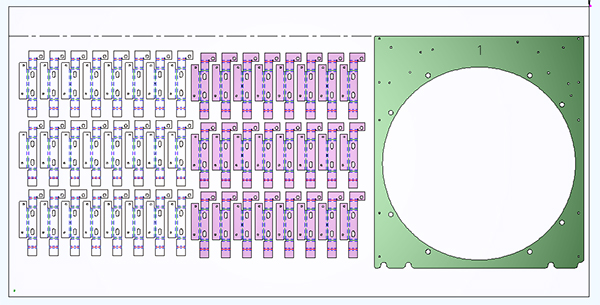The 2018 R2 release of sheet-metal software Radan, includes newly developed functionality that gives users a greater degree of manual control whenever flexibility is required for certain aspects of their individual production processes.

According to the company, while full automation is ideal for simple parts, and plays an important role in manufacturing complex components, there is often the need for some complementary manual input. As a result, the company has added several more focused tools that allow users to better control this requirement.
One such tool is ‘Grid Nesting’, which gives additional flexibility for users wanting to create or manipulate a nest manually. For example, if a sheet is not completely full, users can either let the automatic nester take over or, if they have a clear idea of what is required, deploy Grid Nesting to provide an easy way of filling a space with a particular part. Users can even stipulate the component nesting direction. The previous version allowed users to manipulate automation to get the required result, but Grid Nesting achieves it much faster.
Moving on to new automation functions, a major update is an improved way of calculating the most effective remnants. Previously, the operator had to manually choose the shape of the remnant – square or rectangle – but the ‘Improved Remnant Handling’ function ensures the best possible option is always cut.
Another newly developed function, ‘Picker Arm Movement’, provides additional automation on the machine tool. Automated systems which manipulate the part after it is cut are becoming increasingly popular, even for large, complex components; Radan now automatically predicts the best way to handle the part, so the operator does not have to make that decision.
For further information www.radan.com














